AI, Robots and Other Automatons
The marriage of industry and electronics
I like the image, but it seems like it belonged on the cover of a science-fiction magazine, not in an ad for Revere kitchen ware. After all, a woman marrying a robot raises a few intriguing questions.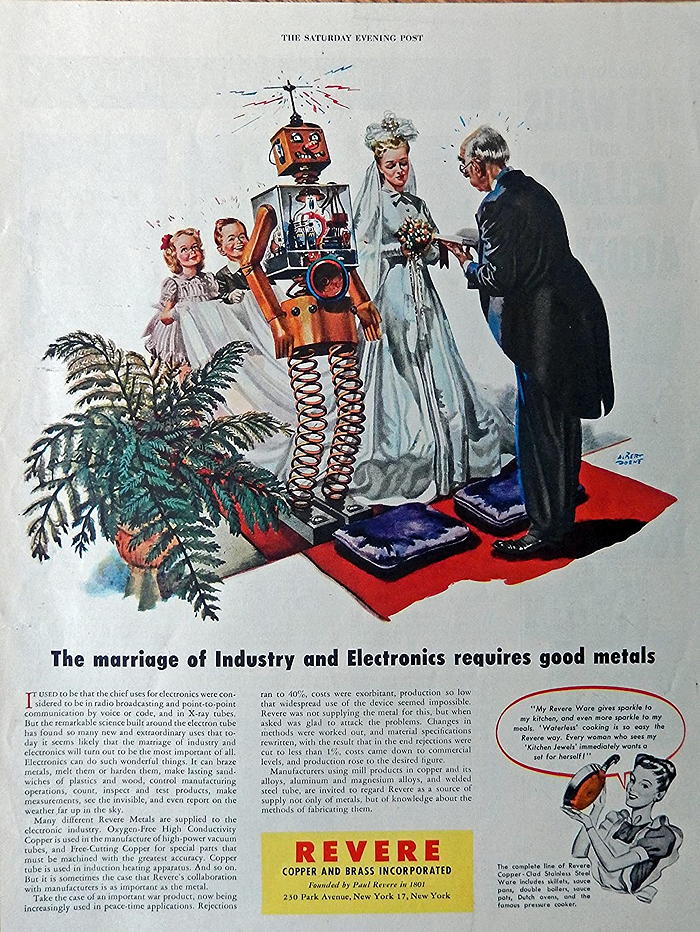
Saturday Evening Post - Nov 15, 1947
Posted By: Alex - Tue Sep 27, 2022 -
Comments (5)
Category: Advertising, AI, Robots and Other Automatons, Marriage, 1940s
Army’s Copper Man
The Copper Man was created in the 1950s by Army scientists to test clothing for soldiers. I think the tubes going into his eyes makes him horror-movie material.
Santa Cruz Sentinel - May 17, 1962
In 1956 Havoline Motor Oil featured him in an ad. As far as I can tell, Havoline wasn't used in the Copper Man. The only connection between the two was that, according to Havoline, the Copper Man "thinks for itself" and so does its motor oil.

Posted By: Alex - Sun Aug 07, 2022 -
Comments (2)
Category: AI, Robots and Other Automatons, 1950s
Darrell Johnson’s Mechanical Listener
Darrell Johnson knew that, if you have to give a speech, it helps to practice it first in front of someone. But sometimes you can't find a willing listener. That's where his 'mechanical listener' came in. It was a sculptured head with eyes that would light up and eyelids that would flutter in response to the sound of a human voice. These movements, he reasoned, would "portray a feeling of life, participation, and cooperation to thereby stimulate expression relative to the topic or subject under consideration with resultant improvement and intensity of such expression."He was granted Patent No. 2,948,069 for this invention in 1960.
It would be interesting to know if a prototype of this thing still survives, hidden away in someone's attic.
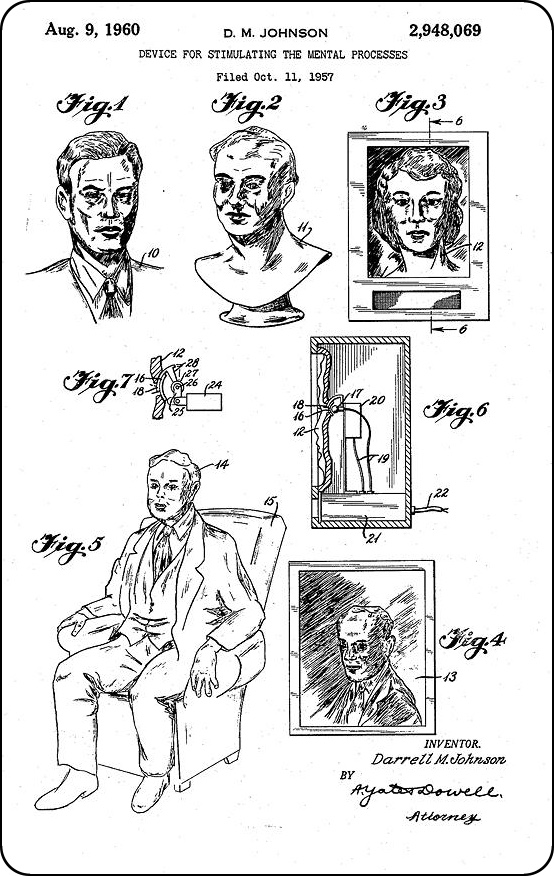
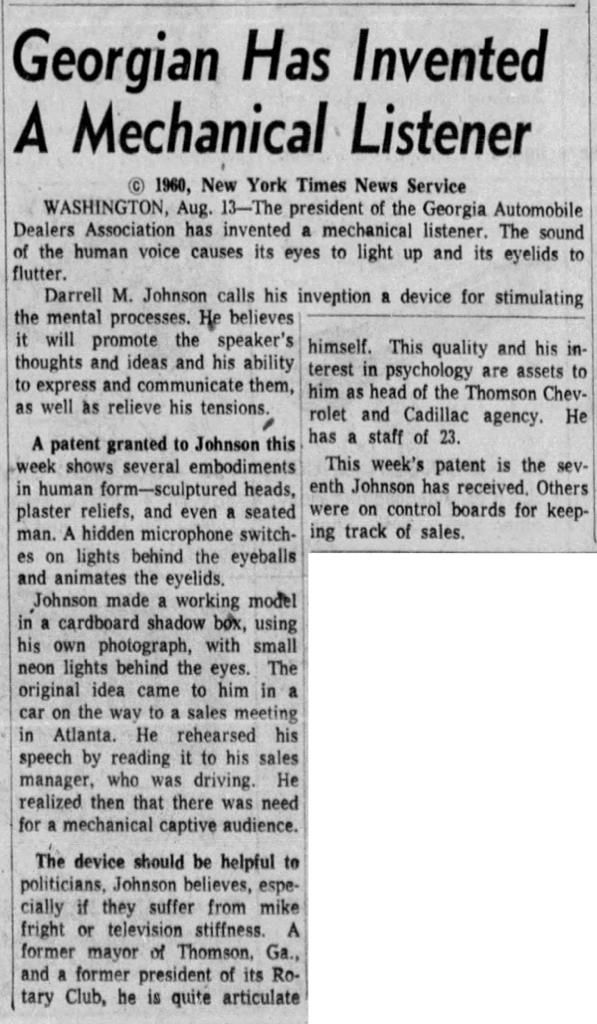
Arizona Daily Star - Aug 14, 1960
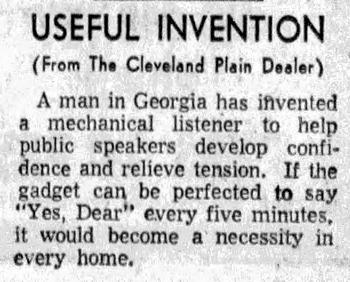
Springfield Daily News - Oct 16, 1960
Posted By: Alex - Fri Jul 15, 2022 -
Comments (4)
Category: Patents, AI, Robots and Other Automatons, 1960s
The Prayer
Text by Enrico Santus. More info: Diemut Strebe
Diemut Strebe has made a previous appearance on WU:
Posted By: Alex - Wed May 25, 2022 -
Comments (5)
Category: Music, Religion, Technology, AI, Robots and Other Automatons
Inappropriate Content Hallucination
Inappropriate Content Hallucination, as defined by a recent study conducted by researchers at the Rochester Institute of Technology, is when artificial intelligence systems insert dirty words into the subtitles of videos meant for kids. From their article:In this paper, we present a novel (and troubling) finding that well-known automatic speech recognition (ASR) systems may produce text content highly inappropriate for kids while transcribing YouTube Kids' videos. We dub this phenomenon as inappropriate content hallucination. Our analyses suggest that such hallucinations are far from occasional, and the ASR systems often produce them with high confidence.

More info: Indian Express
Posted By: Alex - Tue Apr 19, 2022 -
Comments (3)
Category: AI, Robots and Other Automatons, Mistranslations, Swears
Kawasaki Robot Goat
Kawasaki recently unveiled its new robotic goat at the 2022 International Robot Exhibition in Tokyo. I kept waiting for the thing to move faster than at a snail's pace, and it never did.More info: electrek.co
Posted By: Alex - Thu Mar 31, 2022 -
Comments (3)
Category: Technology, AI, Robots and Other Automatons
Robbie the Pulpit Robot
More info: CyberneticZoo.com

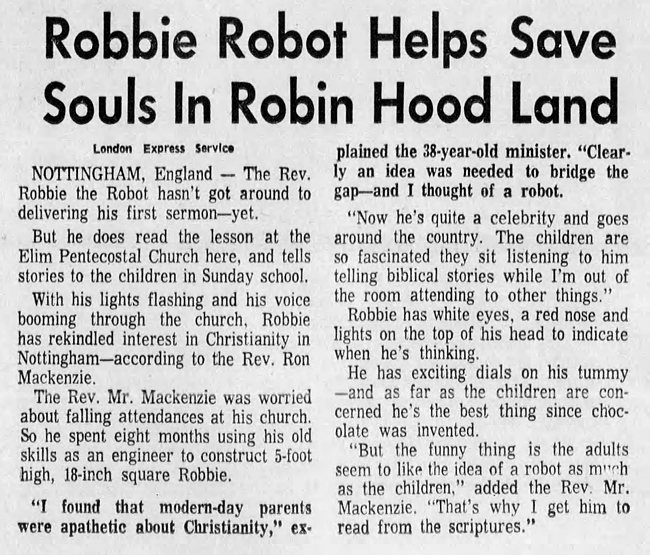
Pittsburgh Press - Aug 23, 1973

Posted By: Alex - Wed Mar 02, 2022 -
Comments (1)
Category: Religion, AI, Robots and Other Automatons, 1970s
Amagami Ham Ham and Qoobo
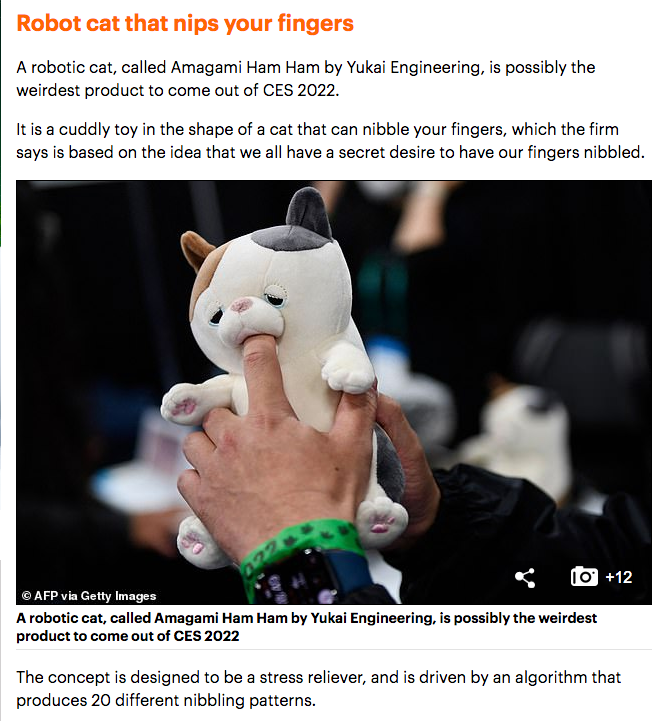
The Amagami Ham Ham website.
The Qoobo website.

Posted By: Paul - Thu Jan 06, 2022 -
Comments (3)
Category: Animals, Chindogu, AI, Robots and Other Automatons, Asia
A History of Mechanical Horses
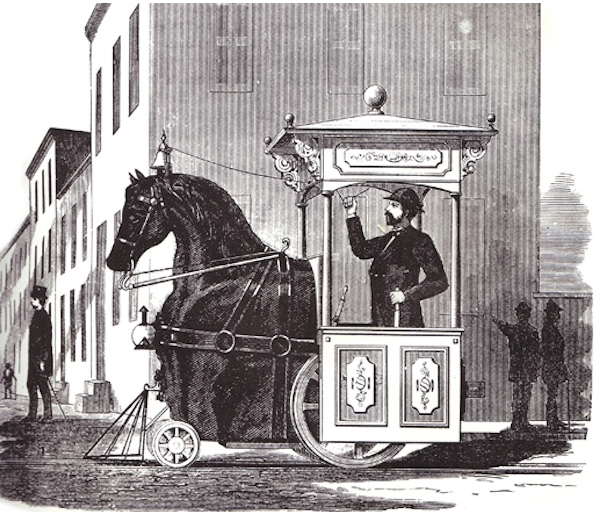
Read the piece here.
There should be a separate article on mechanical horses in literature. My favorite one occurs in these two novels by Roger Zelazny.


Posted By: Paul - Tue Nov 30, 2021 -
Comments (1)
Category: Animals, Inventions, Literature, Fantasy, AI, Robots and Other Automatons, Nineteenth Century, Twentieth Century
Do You Love Me?
With millions of views, this video is making the rounds. But perhaps you have not seen it yet...
Posted By: Paul - Thu Dec 31, 2020 -
Comments (5)
Category: Music, Technology, AI, Robots and Other Automatons, 1960s, Dance

| Who We Are |
|---|
| Alex Boese Alex is the creator and curator of the Museum of Hoaxes. He's also the author of various weird, non-fiction, science-themed books such as Elephants on Acid and Psychedelic Apes. Paul Di Filippo Paul has been paid to put weird ideas into fictional form for over thirty years, in his career as a noted science fiction writer. He has recently begun blogging on many curious topics with three fellow writers at The Inferior 4+1. Contact Us |




